Futures point higher; AMD reports; Novo to cut costs - what’s moving markets
Corebridge Financial (NYSE:CRBG) presented its second quarter 2025 financial results on August 5, showing significant earnings growth and detailing a transformative variable annuity reinsurance transaction that strategically repositions the company. The insurer’s stock closed at $34.48 on August 4, near its 52-week high of $36.41, reflecting investor optimism about the company’s direction.
Quarterly Performance Highlights
Corebridge reported operating earnings per share of $1.36 for the second quarter, representing a 20% increase compared to the same period last year. This marks a significant improvement from the first quarter when the company missed analyst expectations with EPS of $1.16 against a forecast of $1.18.
The company’s adjusted return on average equity (ROAE) reached 14.3%, an increase of 230 basis points year-over-year. Total (EPA:TTEF) sales for the quarter amounted to $10.8 billion, with registered index-linked annuity (RILA) sales reaching $1 billion, and general account business growing by 10%.
As shown in the following comprehensive overview of Q2 performance:
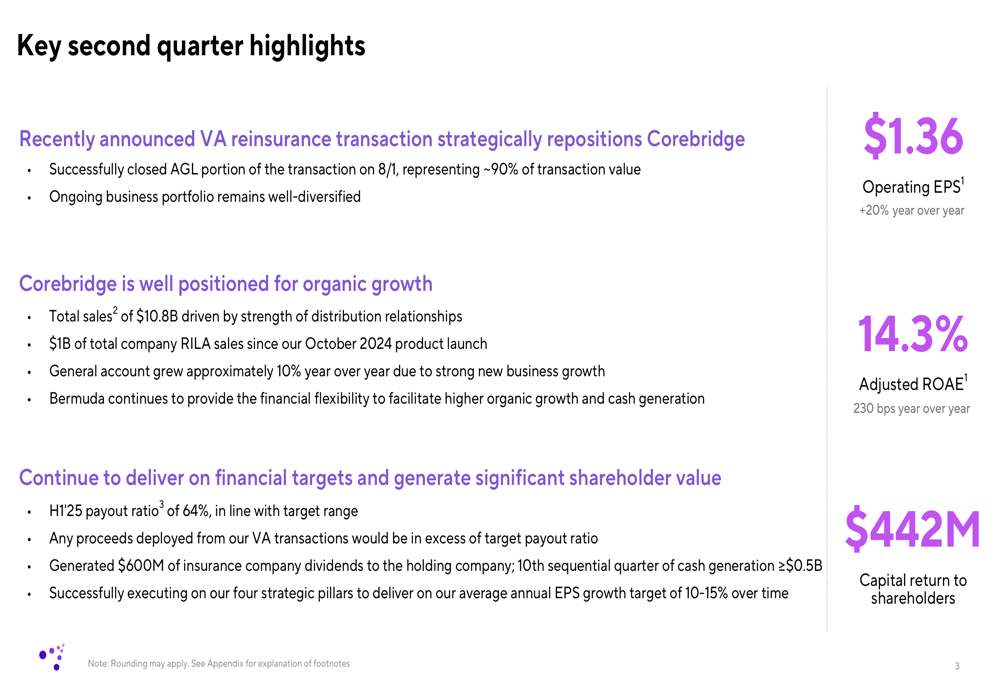
The company’s adjusted pre-tax operating income increased to $942 million when excluding variable investment income, compared to $859 million in the same quarter last year. This performance improvement is particularly notable following the company’s revenue shortfall in Q1 2025, when it reported $4.74 billion against projections of $5.44 billion.
The following chart illustrates the company’s improved operating metrics compared to the previous year:
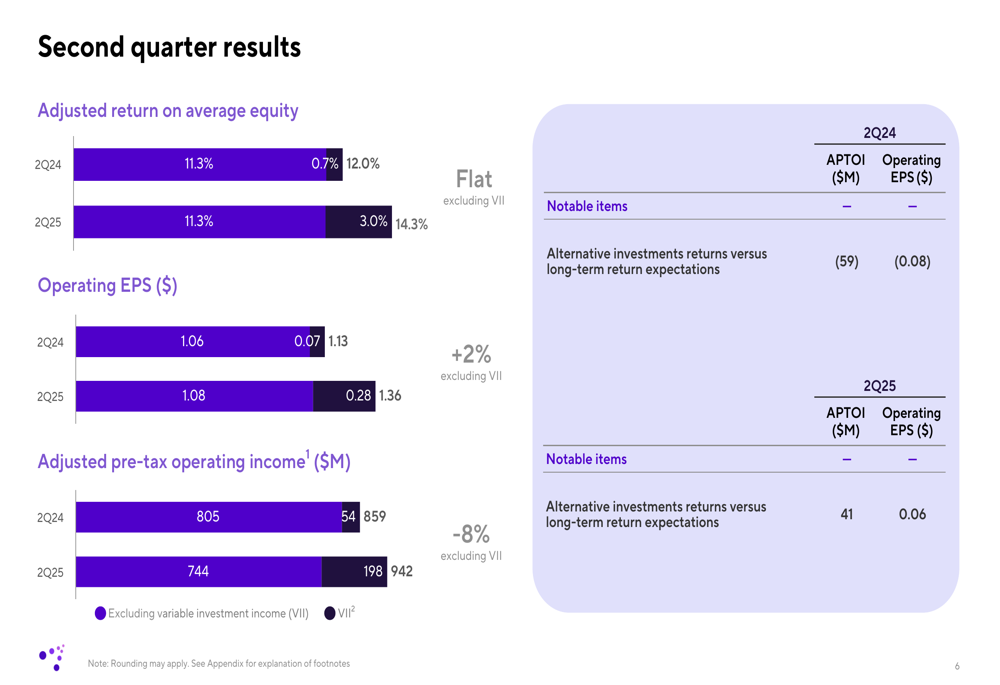
Strategic Repositioning through VA Transaction (JO:NTUJ)
A central focus of the presentation was Corebridge’s recently announced variable annuity reinsurance transaction, which management described as transformative for the company’s risk profile and capital position. The transaction involves transferring $51 billion of account value, achieving a full exit from individual retirement variable annuity financial risk.
The deal is valued at approximately $2.8 billion, representing 9-10 times forward earnings, and is expected to generate $2.1 billion in net distributable proceeds. According to the presentation, the AGL portion of the transaction, representing about 90% of the total value, closed on August 1.
The following slide details the strategic benefits of this transaction:
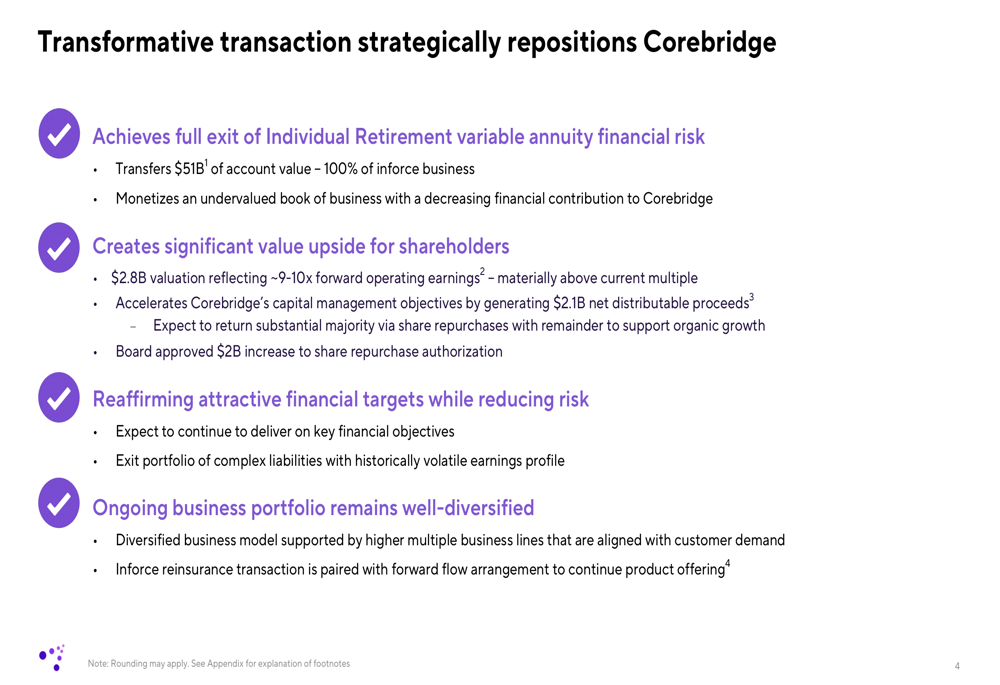
CEO Kevin Hogan had previously emphasized demographic trends supporting the company’s retirement products, noting in the Q1 earnings call that "Over 11,000 Americans are turning 65 every day." The VA transaction appears aligned with this focus, as it allows Corebridge to exit complex liabilities while maintaining a diversified business portfolio concentrated in higher-multiple business lines that align with customer demand.
Diversified Business Performance
Corebridge maintains a diversified business model across Individual Retirement, Group Retirement, Life Insurance (NSE:LIFI), and Institutional Markets segments. The company’s sources of income totaled $1.96 billion in Q2 2025, compared to $1.85 billion in Q2 2024.
The breakdown of income sources is illustrated in the following chart:
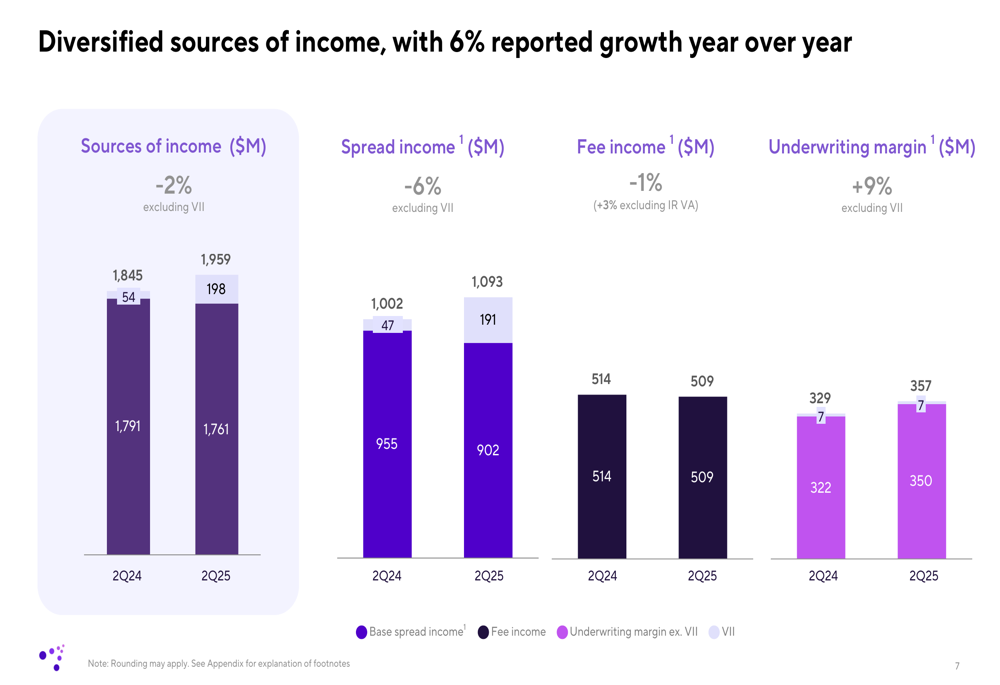
Among the business segments, Life Insurance showed strong performance with adjusted pre-tax operating income of $133 million, up from $95 million in the same quarter last year. Institutional Markets demonstrated even more significant growth, with adjusted pre-tax operating income reaching $173 million, compared to $96 million in Q2 2024.
The Individual Retirement segment, which is being strategically repositioned through the VA reinsurance transaction, maintained stable performance with adjusted pre-tax operating income of $623 million, slightly up from $621 million in the prior-year period.
Capital Management and Shareholder Returns
Corebridge continues to generate substantial cash flow, with $600 million in insurance company dividends in the second quarter, matching the first quarter’s performance and exceeding the $500 million reported in Q2 2024. The company returned $442 million to shareholders during the quarter, maintaining a first-half 2025 payout ratio of 64%.
The presentation highlighted that any proceeds from the VA transactions would be in addition to the target payout ratio, suggesting potential for increased shareholder returns. The company reported $1.3 billion in liquidity at quarter-end and noted that it had increased its existing share repurchase authorization.
The following chart illustrates Corebridge’s consistent cash generation and capital return to shareholders:
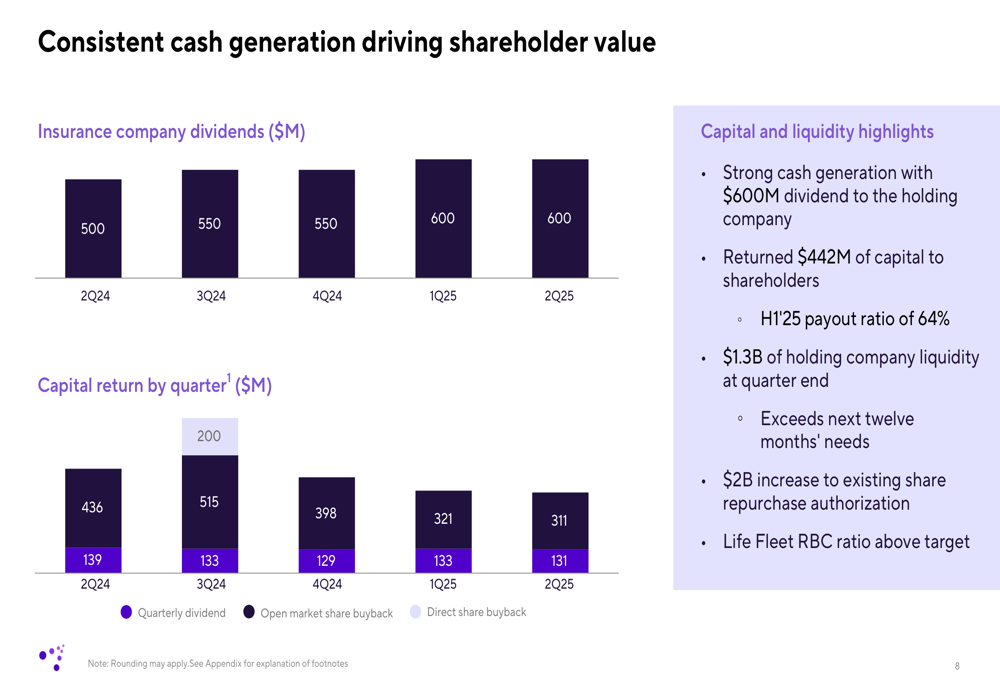
Strategic Outlook and Growth Drivers
Looking forward, Corebridge outlined four strategic pillars to support future growth: driving organic growth, optimizing the balance sheet, creating expense efficiencies, and active capital management. The company reaffirmed its target of 10-15% annualized EPS growth over time, consistent with guidance provided in previous quarters.
The strategic framework is illustrated in the following slide:
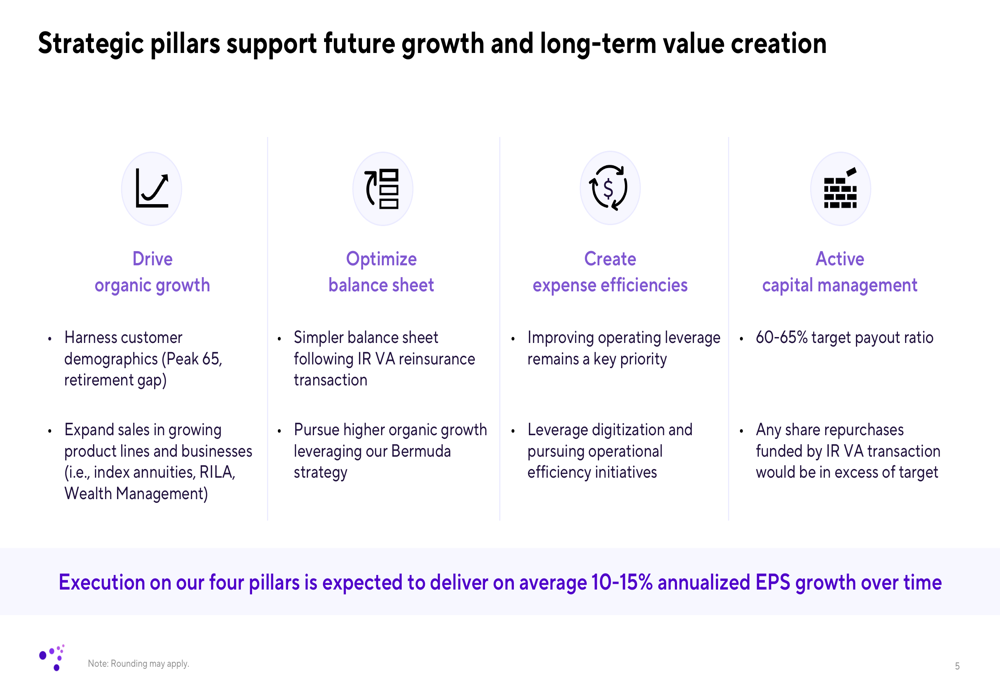
This outlook aligns with the company’s previous guidance from Q1, where it anticipated mid-single-digit EPS growth for 2025 despite expecting alternative investment returns to be below long-term expectations. The strong Q2 performance suggests the company may be exceeding these initial projections.
Corebridge’s value proposition continues to center around its diversified business model, strong balance sheet, and disciplined execution, as shown in the following overview:

With the strategic repositioning through the VA reinsurance transaction and strong Q2 performance, Corebridge appears well-positioned to continue its growth trajectory and deliver on its financial targets, representing a significant turnaround from its Q1 earnings miss earlier this year.
Full presentation:
This article was generated with the support of AI and reviewed by an editor. For more information see our T&C.
